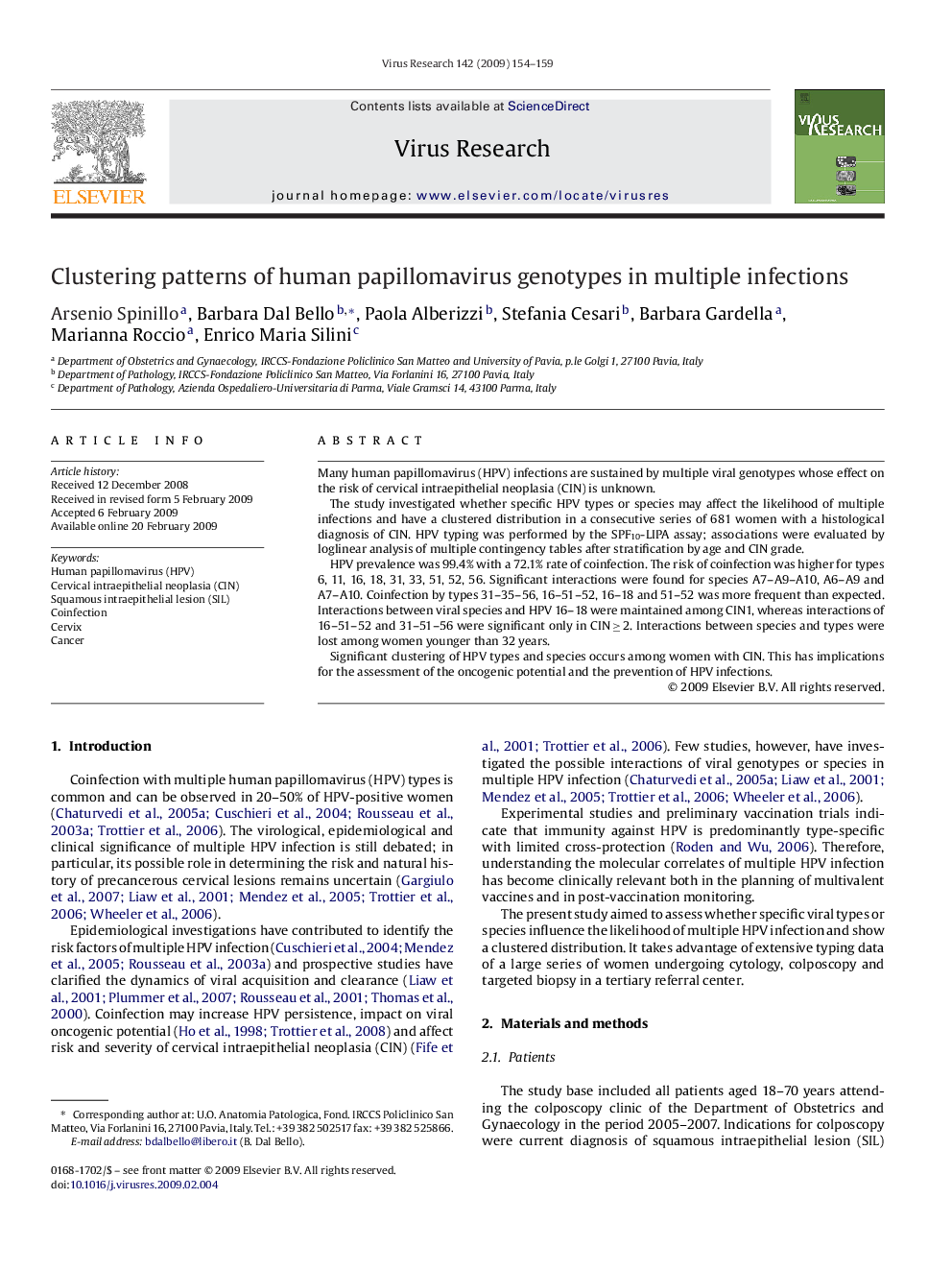| Article ID | Journal | Published Year | Pages | File Type |
|---|---|---|---|---|
| 3430074 | Virus Research | 2009 | 6 Pages |
Many human papillomavirus (HPV) infections are sustained by multiple viral genotypes whose effect on the risk of cervical intraepithelial neoplasia (CIN) is unknown.The study investigated whether specific HPV types or species may affect the likelihood of multiple infections and have a clustered distribution in a consecutive series of 681 women with a histological diagnosis of CIN. HPV typing was performed by the SPF10-LIPA assay; associations were evaluated by loglinear analysis of multiple contingency tables after stratification by age and CIN grade.HPV prevalence was 99.4% with a 72.1% rate of coinfection. The risk of coinfection was higher for types 6, 11, 16, 18, 31, 33, 51, 52, 56. Significant interactions were found for species A7–A9–A10, A6–A9 and A7–A10. Coinfection by types 31–35–56, 16–51–52, 16–18 and 51–52 was more frequent than expected. Interactions between viral species and HPV 16–18 were maintained among CIN1, whereas interactions of 16–51–52 and 31–51–56 were significant only in CIN ≥ 2. Interactions between species and types were lost among women younger than 32 years.Significant clustering of HPV types and species occurs among women with CIN. This has implications for the assessment of the oncogenic potential and the prevention of HPV infections.
